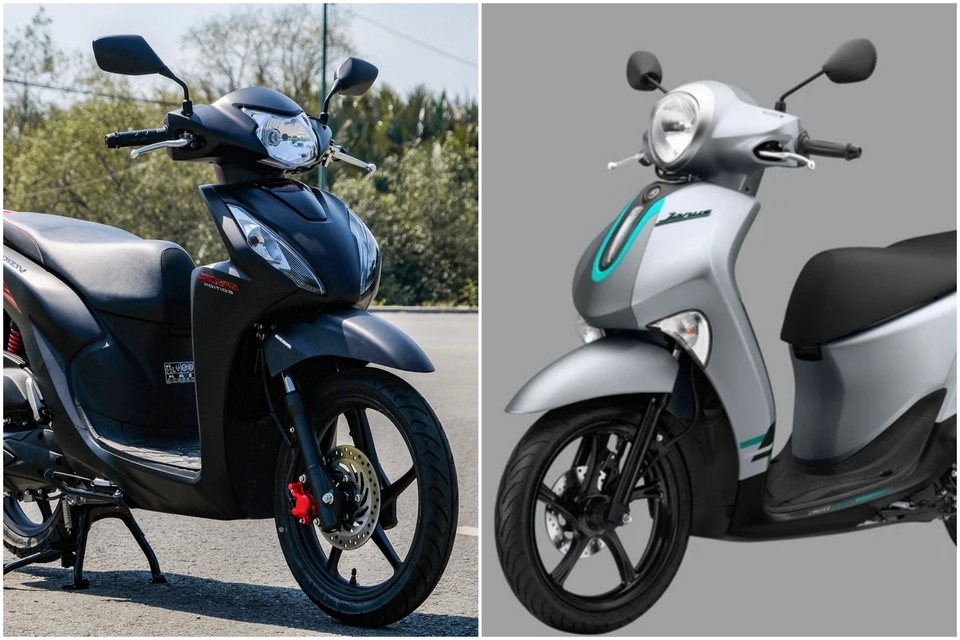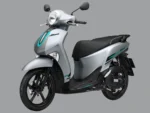
|
Yamaha has recently unveiled the all-new Janus in Vietnam, retaining its three variants: Standard, Special, and Limited, with a starting price of 29.15 million VND.
In Vietnam’s affordable scooter segment, the Honda Vision dominates, while the Yamaha Janus and its sibling, the Yamaha Freego, struggle to compete with their compatriot rival.
With this launch, will the lower price and user-focused upgrades be enough for the Yamaha Janus to rival the Honda Vision?
Yamaha Janus: More Compact, Longer Seat
The 2024 Yamaha Janus maintains its dimensions at 1,850 x 705 x 1,120 mm (length x width x height), compared to the Honda Vision’s 1,871 x 686 x 1,101 mm. The Janus appears slightly more compact than the Vision, though the difference is minimal.
Seat height is crucial for both models, as they primarily target female riders.
The Yamaha Janus has a consistent seat height of 770 mm across all variants. The Honda Vision offers 785 mm in the Sport variant and 761 mm in others.
Both models feature standard seat heights suitable for Vietnamese riders, especially women. The Honda Vision Sport, with its taller dimensions and higher seat, appeals to a broader audience, including men.
|
|
|
The Yamaha Janus (right) is shorter overall than the Honda Vision (left) but boasts a longer seat. |
The Janus 2024’s seat is a standout feature, measuring 760 mm in length, a 77 mm increase from the previous version. The Honda Vision’s seat length is 670 mm, shorter despite its longer overall dimensions.
The 2024 Janus also introduces the Anti-heat Seat, reducing heat absorption by 45% for a cooler ride. This feature is exclusive to the Limited variant.
Improved Turn Signal Design
The 2022 Janus faced criticism for its turn signals mounted on the fender, which often detached during use.
The 2024 model integrates the turn signals into the rear with a new U-shaped taillight, enhancing aesthetics and durability.
|
|
|
The 2024 Yamaha Janus (right) features a sleeker rear design compared to the previous version (left). |
The Janus 2024 offers a longer seat and 20 mm more legroom. The storage capacity increases to 15.3 liters, with thermal insulation and a USB port. It also features tubeless tires and an idle stop system.
The Honda Vision includes a front storage compartment with a charging port and 18 liters of under-seat storage. Both models share similar features like tubeless tires and idle stop systems.
Both scooters have always-on headlights, but Smartkey is reserved for higher variants.
Janus: More Power, Lower Price
Despite its compact size, the Janus is heavier than the Vision. The Standard Janus weighs 97 kg, increasing to 99 kg in higher variants. The Vision ranges from 94 to 98 kg.
The Janus is powered by a 125 cc engine delivering 9.5 hp and 9.6 Nm of torque, while the Vision’s 110 cc engine produces 8.8 hp and 9.3 Nm.
|
|
|
The Yamaha Janus still lacks ABS. |
Neither model offers ABS, a notable omission for safety, especially in slippery conditions.
The 2024 Janus starts at 29.15 million VND, peaking at 33.38 million VND, slightly higher than the 2022 model but still below the Vision’s 31.11 to 36.62 million VND range.
The Janus offers superior specs and a cooler seat at a lower price, but dethroning the Vision remains challenging.
Vision’s Dominance Persists
Honda no longer discloses detailed sales figures, but in 2022, they sold over 2.4 million motorcycles in Vietnam, with the Vision leading at 538,876 units.
According to the Vietnam Association of Motorcycle Manufacturers (VAMM), the Vision accounted for nearly 18% of the 3 million motorcycles sold in 2022.
|
|
|
The Honda Vision’s market lead remains strong. |
The Vision’s dominance may continue, and while the 2024 Janus makes the competition more interesting, a significant shift is unlikely unless Yamaha adds ABS or Honda introduces it to the Vision.
Great Books for Your Ride
Our Auto section offers engaging book recommendations for your journeys. Whether you’re on a long trip or taking a break, these books are perfect companions.








































